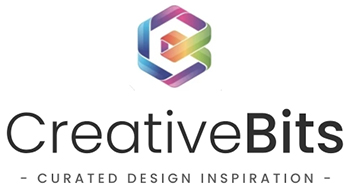The term User Experience (UX) encompasses the comprehensive range of interactions and experiences a user has with a company’s products and services. But, a profound understanding of UX is more than a passing knowledge of its elements; it’s the mastery of creating a seamless, intuitive, and engaging journey for the user. It is here that the foundations of a positive UX are laid, ensuring that the users leave with a memorable impression and a desire to return.
Defining UX
UX is the emotional and practical bond formed between the user and the product. It’s the warmth felt when the interface anticipates needs, the satisfaction of a seamless transaction, and the comfort of effortless navigation. Good UX is akin to a well-orchestrated symphony where every interaction contributes to a delightful and harmonious user journey.
The Evolution of UX Design
The journey of UX design is one of relentless evolution, adapting to the shifting sands of technology, psychology, and business needs. Its narrative is rich with the progression from merely focusing on functionality to creating multi-dimensional experiences that enchant and engage users at every touchpoint. This evolution has transformed UX into a vital component of product strategy and development.
The Fundamentals of Good UX Design
A strong UX stands firmly on pillars that are built with the user in mind. Every aspect, from accessibility to aesthetics, plays a pivotal role in the creation of an experience that not only answers the user’s needs but also anticipates their unspoken expectations.
Intuitive Navigation
Intuitive navigation is not just about getting from point A to point B; it’s about the journey in between. It’s about creating a pathway that users can navigate naturally, almost instinctively, without the need for conscious thought. Menus should be logical, actions should be obvious, and the end-goal should always be within clear reach.
Consistency in Design
Consistency is the silent ambassador of your brand. It reaffirms the user’s sense of direction and expectation. By maintaining a uniform design language — be it through typography, color schemes, or layout patterns — users develop a subconscious understanding of how your product operates, which in turn reduces their cognitive load and enhances their overall experience.
Visual Hierarchy
The principle of visual hierarchy takes users by the hand and guides them through the content, emphasizing what is important and subtly downplaying the rest. Tools like Icons8’s Lunacy, a powerful vector design software, make it easier for designers to implement visual hierarchy effectively, creating interfaces that are both beautiful and functional.
Accessibility
Good UX is inclusive UX. It reaches out to every user, irrespective of their physical or cognitive abilities. It is not merely a recommendation; it is a responsibility. Leveraging the power of design to create experiences that everyone can access equally is the hallmark of thoughtful UX.
The Role of User Research in UX
Creating an interface without understanding the user is like writing a love letter and then addressing it ‘to whom it may concern’. User research delves deep into the psyche of the user base, uncovering the intricacies of their behaviors, needs, and frustrations.
Understanding User Needs
Deciphering the labyrinth of user needs is a task of both art and science. It requires an empathetic approach to understand their desires, pain points, and the solutions they seek. This understanding is the compass that guides every decision in the UX design process.
Creating Personas
Personas are more than just composites of user characteristics; they are the avatars that UX designers champion. By fleshing out detailed user personas, designers can predict and cater to the needs of their target audience, ensuring that the UX is tailored to real people with real expectations.
Conducting Usability Testing
Usability testing is the crucible in which UX is refined. Observing real users as they interact with your product provides invaluable insights that no amount of speculation can. It’s a reality check for UX designers, ensuring that their designs resonate with users and function as intended in the real world.
Optimizing UX with Technology
Technology is the magic wand that can either elevate the user experience to new heights or tangle it in a web of complexity. The choice of technology, and how it is applied, can make a significant difference in the effectiveness of UX.
The Impact of Responsive Design
Responsive design is not just a feature; it’s a cornerstone of modern UX. It’s the assurance that the user’s experience will be consistent whether they’re on a desktop, a tablet, or a smartphone. A responsive design adapts fluidly to the user’s device, presenting content in the most optimal format for their screen.
Leveraging AI and Machine Learning
AI and machine learning are the oracles of UX design, predicting user needs and automating interactions to create a personal and anticipatory user experience. They can transform a static interface into a dynamic space that evolves and adapts to the user’s behavior.
Integration with Emerging Tech
The bold integration of emerging technologies like AR/VR, biometrics, and IoT opens up new frontiers for UX, creating immersive and interactive experiences that were once the realm of science fiction. Icons8’s Lunacy is at the forefront of this, offering designers the tools to experiment with and implement these technologies in their UX design.
Emotional Design and UX
The emotional dimension of UX is the bridge between the user and the product that transcends mere usability. It’s about how the product resonates with the user, invoking a sense of belonging, understanding, and pleasure.
Crafting a Story in Design
Humans are hardwired to respond to stories. A product that tells a compelling story not only captures attention but also engages the user on a deeper level. Using narrative elements can turn a mundane task into an enjoyable experience, making the interaction memorable.
Design for Engagement and Delight
Design for delight means creating moments that surprise, please, and exceed expectations. These are the details that make the user’s experience not just satisfactory, but delightful. They turn users into advocates and products into favorites.
Metrics to Measure UX Effectiveness
UX, like any field, must be measured to be managed. Defining the right metrics gives designers and stakeholders a clear picture of where the UX stands and what needs to be improved.
User Satisfaction Surveys
User satisfaction surveys are the direct line of communication between the user and the designer. They provide subjective insights into the user’s thoughts and feelings about the product, which can be used to gauge the emotional impact of the UX.
Task Completion Rates
Task completion rates shed light on the functionality aspect of UX. They measure the efficiency with which users can complete basic tasks — a critical component of a successful user experience.
Heatmaps and Analytics
Heatmaps and user analytics tools provide a visual representation of how users interact with your product. They can highlight areas of the interface that attract the most attention and those that are being ignored, offering a data-driven way to refine the UX design.
Common Pitfalls in UX and How to Avoid Them
The road to exceptional UX is fraught with potential missteps, but awareness and proactive measures can keep the journey on track.
Overcomplicating the Interface
An interface cluttered with unnecessary elements can be the Achilles’ heel of UX. The solution lies in simplicity — removing the superfluous and streamlining the essential. Tools like Icons8’s Lunacy help designers to maintain simplicity by providing intuitive design elements that enhance UX without adding complexity.
Ignoring User Feedback
User feedback is a goldmine of insights that can steer the UX design in the right direction. Ignoring it is akin to sailing a ship without a compass. Regular feedback loops and iterations based on user input are crucial for the evolution of UX.
The Future of UX
The future of UX is an exciting blend of possibilities, challenges, and uncharted territories. As designers, technologists, and strategists, the onus is on us to keep our fingers on the pulse of innovation and anticipate the needs of tomorrow’s users.
Trends to Watch
Emerging trends like voice-activated interfaces, personalized experiences through AI, and the blending of physical and digital realms through AR and VR are reshaping the landscape of UX. These trends are not just passing fads; they are the indicators of where the user experience is headed.
Continuous Learning and Adaptation
The field of UX is dynamic, and those who inhabit it must be equally so. Continuous learning, experimentation, and adaptation are the keys to not just surviving but thriving in the world of UX design. Tools like Icons8’s Lunacy are invaluable for designers who wish to stay ahead of the curve, offering state-of-the-art features that align with the latest UX trends.
Conclusion
In summary, a good UX is a seamless blend of form, function, and feeling. It’s an intricate dance of elements that, when executed well, creates an experience that feels less like using a product and more like second nature. It’s a conversation, a story, and a journey that leaves the user satisfied, engaged, and eager for more. The future of UX is bright, and as we harness technologies like Icons8’s Lunacy, we open up new dimensions of possibility for what can be achieved.


Comments are closed.